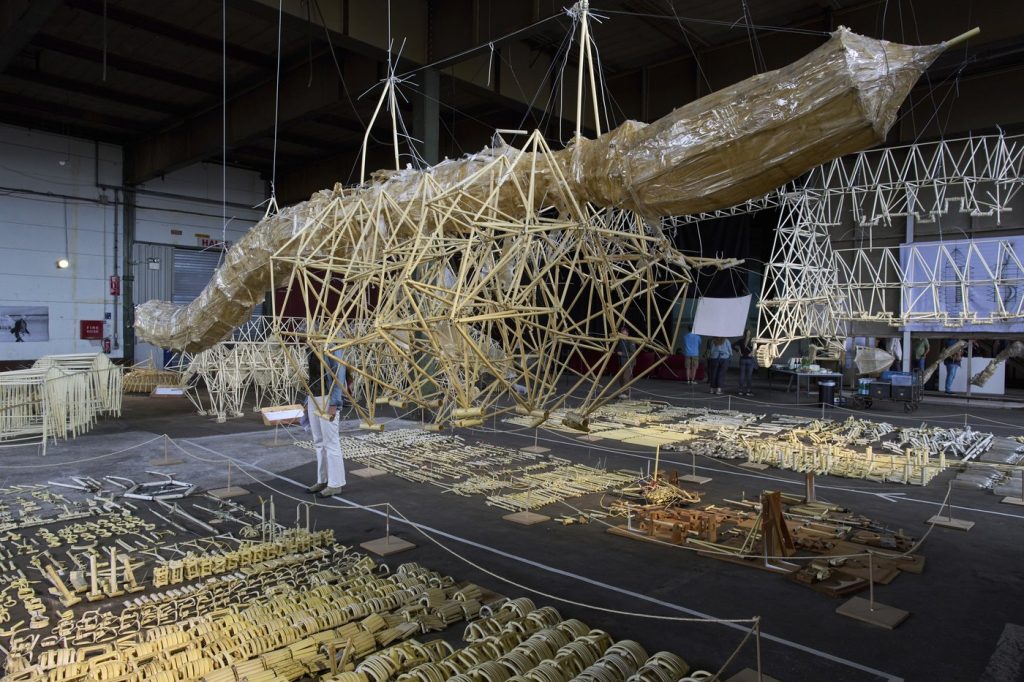DELFT, Netherlands (AP) The renowned wind-powered sculptures known as 'strandbeesten,' or beach beasts, have journeyed from the Dutch North Sea coast to prestigious Miami art shows, even making appearances on popular television shows like "The Simpsons." These unique creations have now found their final resting place in Delft, a small city in the western Netherlands that is famously associated with the painter Johannes Vermeer, known for his masterpiece, "Girl with a Pearl Earring," and the blue-painted pottery that bears the city's name.
The exhibition, entitled "The Strandbeesten Mortuary," showcases the "bones" of Theo Jansen's strandbeesten, who has made Delft his home for decades. Jansen, a 77-year-old artist, mentioned that the creations symbolize not just art but an evolutionary journey. He stated, "During the years, there has been a sort of evolutionary history, you could say. And you could see these animals as sort of natural historical objects," when speaking to The Associated Press ahead of the exhibition's opening.
Since Jansen crafted the first strandbeest from plastic pipes and tape in 1990, the exhibition traces the various iterations of these mobile sculptures that have evolved over the years. As the strandbeesten developed, Jansen began to integrate materials such as plastic bottles, wooden planks, cloth, and cardboard into their designs. The life cycle of these creations, mostly made from PVC pipes, has left behind a remarkable fossil record, all of which is displayed in the exhibition.
Marloes Koster, who organized the exhibition at the Prinsenhof Museum in Delft, revealed that Jansen's ultimate ambition is to create a strandbeast that can live indefinitely. She noted, "He’s not there yet, so these are the ones that didn’t make it," referring to the various versions on display that represent the history of Jansen's creative process.
Currently undergoing extensive renovations, the museum has been hosting arts and culture events at alternative venues throughout the city while its main building is closed. Jansen, who grew up near the Dutch coastline, has always been fascinated by the strong winds that sweep the region. He cleverly harnesses this natural force to allow his creations to 'walk' along the beach. Each year, Jansen constructs a new strandbeest, subsequently declaring the previous one 'dead' by the end of summer.
“All summer I do experiments, and in the fall I’m a little bit wiser (about) how these animals should survive in the future,” Jansen quipped, highlighting his continual pursuit of innovation in his craft.
Visitors at the exhibition's opening included many long-time followers of Jansen's work, eager to witness the evolution of his strandbeesten. One local, Cor Nonhof, remarked on the noticeable progression in Jansen’s work, stating, “You see a kind of development in the way he does things. So they start out very simple, and then it gets increasingly complicated. So they evolve.”
Despite the celebratory atmosphere of the opening, Jansen was already looking ahead to further advancements in his creations. "I cannot do anything else," he expressed, "And I am very happy with that.” His passion and commitment to his work undoubtedly continue to resonate with those who admire the captivating world of strandbeesten.










